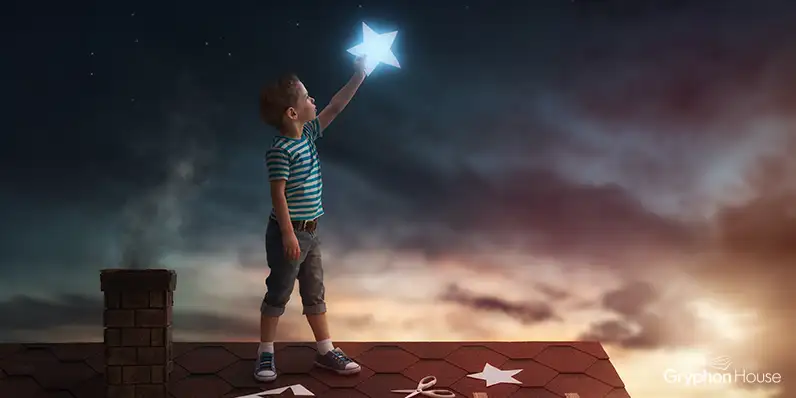Art and children go hand in hand. Young children are always full of creative ideas, and art provides a way for them to express themselves and make what they imagine concrete. The creativity brought out by art also builds abstract thinking skills that help with problem solving, spatial reasoning, scientific inquiry, and a host of other important topics.
Art and children go hand in hand. Young children are always full of creative ideas, and art provides a way for them to express themselves and make what they imagine concrete. The creativity brought out by art also builds abstract thinking skills that help with problem solving, spatial reasoning, scientific inquiry, and a host of other important topics.
Art always has a place in the classroom, as evidenced by the many activities in MaryAnn Kohl’s book Preschool Art. She lists dozens of art activities that can be added to any lesson plan to encourage creative thinking and expression. Check out these fun art activities that will spark creativity in your students.
Scrimshaw Pendant
Materials:
- 1/3 cup Plaster of Paris
- 2/3 cup water
- Nail or pin
- Felt pens
- Measuring cups
- Leather thong
- Spoon
- Shellac, optional
- Wax paper
- Rag
Process:
- Mix 1/3 cup Plaster of Paris in 2/3 cup of water in a measuring cup with a spoon until thick and smooth. Remember to work fast because the plaster will harden quickly!
- Drop some spoonfuls of plaster onto the wax paper. Harden for five to ten minutes. If necessary, smooth the plaster with the back of a spoon
- Poke a hole in the top of the plaster blob on the wax paper while the plaster is still soft
- Once the plaster has hardened, have children carefully scratch a design into the pendant with a nail or pin
- Draw on the scratched design with felt pens and then rub away the excess. The ink will fill the scratches
- Cover the pendant with shellac to preserve the design
- Run a leather thong through the hole and wear the plaster scrimshaw as a pendant or necklace
Snowy Etching
Materials:
Process:
- Using muscles and determination, completely color a piece of white drawing paper. Color hard and shiny using various colors
- Using black, color over the first layer of colors
- When complete, scratch a design into the top layer of the crayon. The first layer will show through
Wire Sculpting
Materials:
- Plaster of Paris
- Water
- Measuring cups
- Bowl
- Spoon
- ½ pint individual milk carton
- Scrap telephone cable (colored wires inside the cable) pre-cut to 12”
- Watercolor paints
- Decorative items such as beads or ribbon
Process:
- Mix one cup Plaster of Paris with one half-cup of water in a bowl with no spoon
- Pour plaster into the small milk carton
- As the plaster begins to harden, the artist can place wires in the plaster in any fashion, number, or arrangement
- Dry until the plaster is hard
- When the plaster is dry and hard, tear away the milk carton. Bend and sculpt the wires into a shape or a sculpture
- Add optional sculpture items to the wires like beads or ribbons
- Paint the plaster with the watercolor paint


